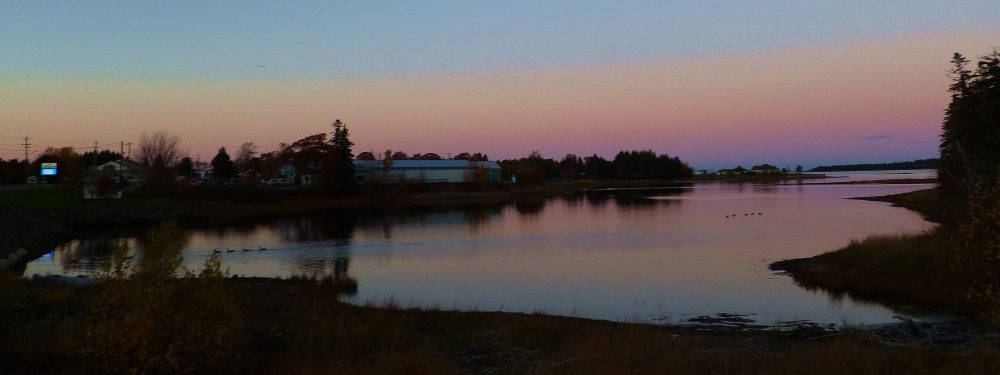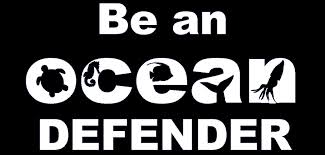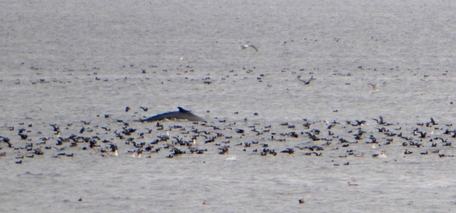
Herring provide a feed off Newfoundland, George Griffen.
Kent County NB Chapter, Council of Canadians
coc.kent.county.nb@gmail.com
July 11, 2017
The Honourable Dominic LeBlanc,
Minister of Fisheries, Oceans and the Canadian Coast Guard
Attention: Christie Chute, Manager, Marine Conservation Program
Integrated Oceans Management, Fisheries and Oceans Canada
200 Kent Street, Room 12W127, Ottawa, ON K1A 0E6
Oceans-NL@dfo-mpo.gc.ca
RE: PRELIMINARY QUESTIONS & COMMENTS
concerning the proposed Marine Protected Area for the Laurentian Channel,
in reference to Canada Gazette Part I notice (June 24, 2017)
Dear Minister Dominic LeBlanc:
As you are aware, Minister LeBlanc, our Kent County NB Chapter of the Council of Canadians has written you several times previously about east coast marine life, coastal, and ocean protection issues.
We are relatively new to engaging with government on these matters, and learning as we go. After carefully reading the Canada Gazette notice re: designation of a Marine Protected Area in the Laurentian Channel (LCMPA) between mainland Canada and Newfoundland, we reviewed the concerns of esteemed expert organizations such as the Canadian Parks and Wilderness Society (CPAWS), the Ecology Action Centre (EAC), World Wildlife Fund (WWF-Canada), and the Sierra Club. As well, we have listened to comments from marine scientists in our own Council of Canadians network. At the same time, we have been reading through your government’s discussion paper Environmental and Regulatory Reviews (ERR) on how to “regain public trust” in regards to federal environmental protection processes.
We feel it is best to approach this particular topic by asking some questions. After we get the answers, we will be better able to write a submission on the LCMPA proposal.
The Science-Based Risk Assessment
The Gazette notice says that a “science-based risk assessment” was done in 2012. Regrettably, the notice does not provide a link or a citation to the aforementioned science-based risk assessment.
As keen observers of government, we know the early years of this decade were a time of great upheaval in your department. The government of that day, under Stephen Harper, tore apart federal environmental protection legislation, scientific research capacity, enforcement capacity, etc. and in fact muzzled many professionals whose researched conclusions did not synchronize with the Conservative government’s industrial development goals.
Your government has been working hard to change this culture of repression and narrow focus. ERR states, “There is a need for greater transparency around the science, data and evidence” (p1)… “in all aspects of environmental assessment and regulatory processes, from making data and science accessible to clearly communicating the basis for decisions” (p11). Sadly, this excellent objective is not met in the Gazette announcement of the LCMPA proposal. There is no route in the Gazette text to access information on the 2012 assessment, nor any other scientific evidence for the proposal as it presently stands.
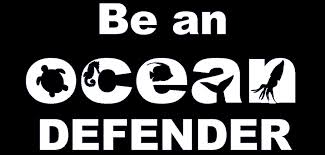
All community members who care about oceans, marine creatures and coastal life need to know the 2012 assessment’s terms of reference, content, personnel, and precise recommendations. Given that it was prepared during the Harper government era, we need to be certain that the assessment was done free from political intervention by truly qualified and unbiased external experts. We ask:
-
Could you please provide us with a copy of this assessment material as well as the information about who prepared it, and their terms of reference?
Basics of the Laurentian Channel Marine Protected Area (LCMPA) Proposal
Life on our entire planet depends on the global community fully addressing the principles established at the United Nations’ Oceans Conference last month: to ensure sustainability of the world’s oceans and the life within them. For starters, oceans produce about 70% of our planet’s oxygen. The warming trend and other side-effects of climate change are already causing de-oxygenation of our oceans, which is already having disastrous impacts. Then there is the plastics issue. All species in the ocean are at some state of risk from one anthropogenic cause or another. For humans, food security and rising waters are serious concerns. The list of human-made damage continues to grow, and appears endless.
When members of our organization first heard about the “Marine Protected Areas” and the related plan to establish use-zoning districts in relation to the Bay of Fundy, we were not convinced. How could mapping right-of-ways and slender no-go zones do anything to address the ongoing oceanic ecoapocalypse? Ironically, the marine scientist whose encouraged us to appreciate potential strengths of MPAs and related strategies is Dr. Rodolphe Devillers of Memorial University in Newfoundland. Dr. Devillers is now speaking out about the limitations of this LCMPA proposal, in an article published in Hakai Magazine on May 9-17.
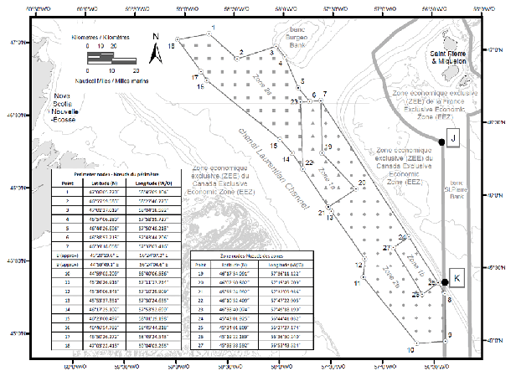
When designing marine protection, conservation goals are absolutely paramount, and the task requires undivided focus. We understand that DFO is very vulnerable to industry pressure because of its multilateral mandated responsibilities. Your department is charged to work with diverse stakeholders: commercial fisheries, small independent fishers, ecotourism entrepreneurs, coastal resident communities, and environmental organizations. In many instances, middle ground between these sectors must be found, to accommodate survival of all creatures depending on the salt water for life, including human beings. However, when it comes to ocean, marine life and coastal protection, there is no middle ground on the need to establish firmly protected, inviolate areas in our salt water bodies. This is humanity’s only hope for a future.
Returning again to the just-released Government of Canada discussion paper Environmental and Regulatory Reviews, it acknowledges, “Government does not effectively communicate how science and data are weighed or contribute to federal decision making.” This is precisely the stumbling block we hit as we tried to understand why recent changes were made to the original proposed area and conservation goals of the proposed LCMPA. So we ask:
-
Given Canada’s international and domestic commitments to protect 5% of our coastal waters by the end of 2017, why were the boundaries for the LCMPA cut by one-third?
-
Why were ten species found in the Laurentian Channel, and originally identified as needing protection, not included in the final list of protected species for this MPA?
-
Why were cod and redfish fisheries not given further conservation support?
-
As suggested in a June 21, 2017 article, did some of these changes happen after “closed-door meetings” with petroleum and other industry officials?
-
Were your own in-house regional marine experts at “DFO Science” asked to report on the original LCMPA concept and/or on the recent diminishment of the proposal?
If there is a DFO Science report on this proposal, please forward us a copy by return email. (** Note to Reader: see video insert at the end of this letter. **)
Adaptive Management Zone
The apparent need for the term “adaptive” to describe Zones 2a and 2b is tangible evidence of the conflictive pressure industry puts on DFO, when DFO is trying to do serious conservation. This situation is illuminated by reasons offered for the term “adaptive” in the Gazette text. A five-year review will allow DFO to see if conservation measures can be eased (“adapted”) to suit industry’s objectives of increasing commercial catch areas and species. If a regular review process is to be established in the regulations for this proposed MPA, it should be a comprehensive public review allowing for broad, transparent stakeholder input to examine tightening conditions throughout the MPA in all Zones, as well as consideration of appropriate response to any fishery rebounds.
-
Will you comprehensively itemize the terms of reference for this intended review, including what will be considered, how various stakeholders can engage, will we be assisted by DFO to do so, and assuring all of wide public opportunity to engage?
Incompatible Uses
There is no excuse, and no basis in bona fide marine environmental science, for the inclusion in a marine protected area of:
-
oil and gas development (82% of the proposed MPA);
-
seismic activity (88% of the entire proposed MPA in each year);
-
underwater cables (100%; and although they may have a small footprint when laid, the work to lay them wreaks havoc);
-
major shipping routes (100%; while this falls into Transport Canada’s (TC) mandate, there is no evidence of DFO having attempted to engage TC to reduce it); and,
-
directional oil and gas drilling (98%, and recent scientific evidence is that this contributes to earthquake activity).
The inclusion of these totally incompatible uses in your proposal returns us to our opening question, although now we ask more broadly:
-
Will you please provide copies of the scientific marine conservation research on which you based these questionable decisions you have proposed for the LCMPA?
Canada has committed, internationally and domestically, to protect 5% of our coastal waters for ongoing, unlimited, intensive conservation by the end of 2017, and 10% of our coastal waters by 2020. Diminishing the extent and content of the protection offered by this MPA is not the way to reach our goals. It undermines the entire meaning and value of the process.

Canada has historically been a world leader on matters of principle put forth by the United Nations, a place of honour lost during the previous federal administration. Prime Minister Justin Trudeau appears willing to resume this mantle. Ocean protection is a very important place to reestablish our nation as a world leader for international social and economic justice, and vercome the decade of repression of science and environmental protection that the Harper government left as its legacy. We see DFO beginning to operate in a more open, transparent, and community-engaged manner. Now is the time to move “full speed ahead” with that. You will earn a lot of respect and support for doing marine protection the right way.
Thank you for this opportunity to make preliminary comments on, and ask questions about, the proposed LCMPA. We look forward to a prompt response to the above questions so that we can make a full submission before the final date, which we believe would be July 24, 2017 at the earliest.
Respectfully yours,
Ann Pohl
Kent County NB Chapter, Council of Canadians
copies:
Prime Minister Justin Trudeau
Dr. Rodolphe Devillers, Memorial University of Newfoundland
Sabine Jessen, Canadian Parks and Wilderness Society
Susanna Fuller, Ecology Action Centre
Megan Leslie, World Wildlife Fund-Canada
Gretchen Fitzgerald, Sierra Club
Brent Patterson, Council of Canadians
Emma Lui, Council of Canadians
Oceans & Marine Life Chapters Network, Council of Canadians
Play this video. Hear what a DFO Scientist says about this ocean treasure region.
Then ask yourself: “Why is there no NL DFO Science report cited in the Canada Gazette announcement for this proposal?”
…Could that be that NL DFO Science has NOT been asked to report,
because they would not agree with the proposal as written? Hmmm….
